Bluebell flowers are one of the most popular types of flowers found in gardens, woodlands, and meadows.
While they grow naturally across Britain, parts of Europe, and the United States, they are remarkably adaptable flowers that can be planted in gardens elsewhere.
These beautiful flowers are typically associated with the start of spring.
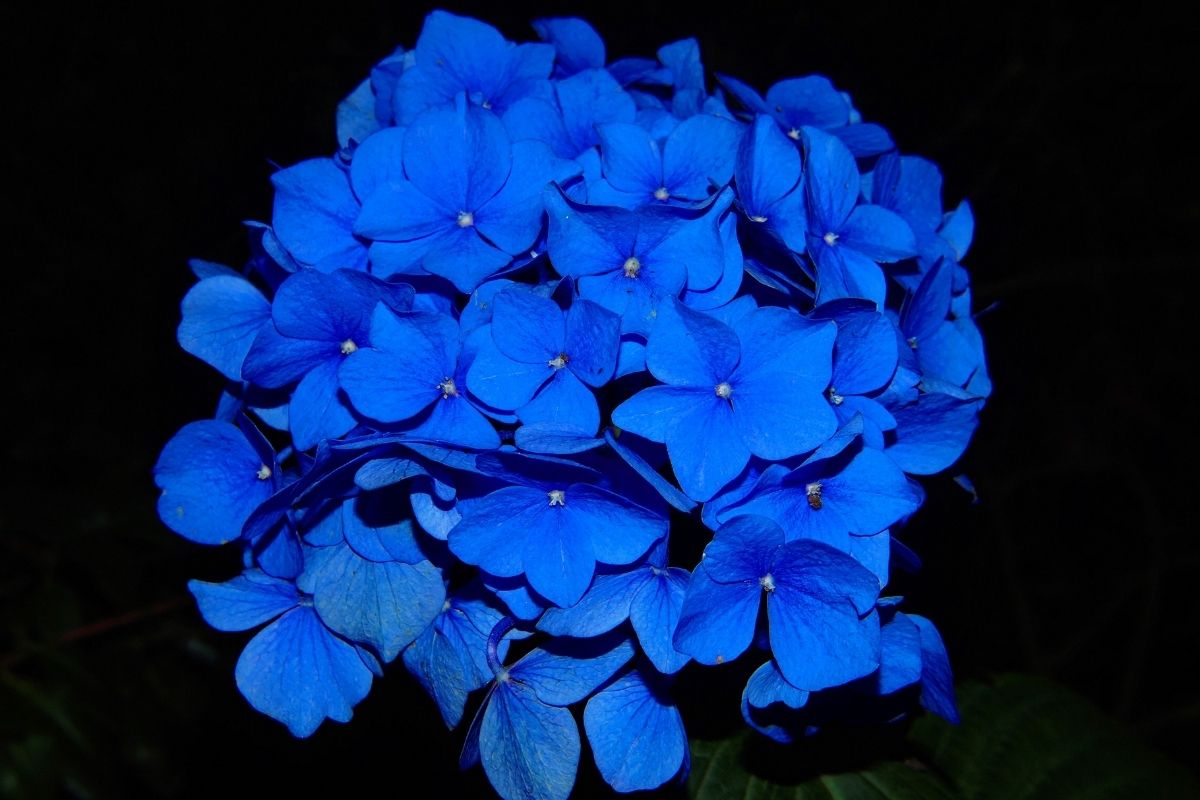
However, there are more bluebell flower species than you might think. In fact, there are even some blue bellflowers that are worthy of being planted in a backyard garden.
Any perennial that bears bell-shaped flowers is technically a bellflower, after all.
Whether you’re looking to expand your knowledge of flowers, find a new species to add to your garden, or if you’re simply figuring out the name of that flower species you’ve forgotten about, here is our guide to blue bell flowers!
British Bluebell (Hyacinthoides Non-Scripta)
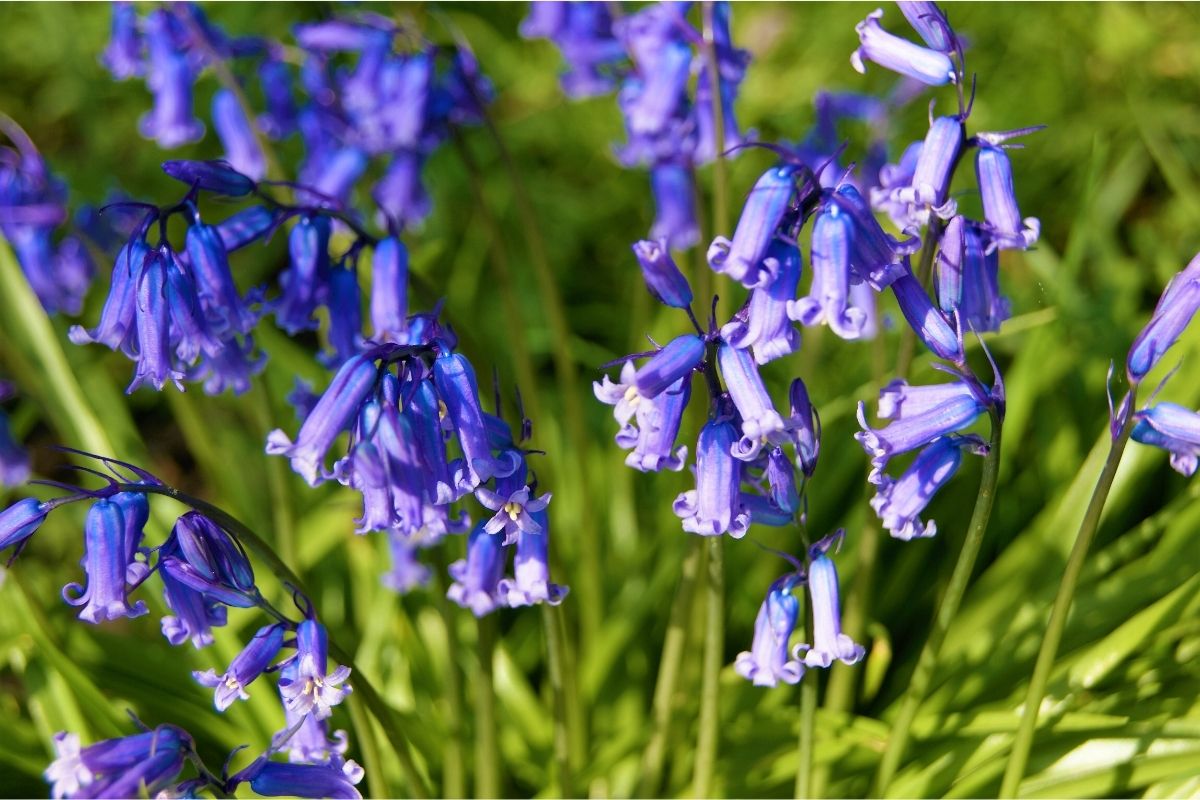
As the name suggests, British bluebells are native to the British Isles, including parts of France and Spain.
These flowers grow to heights of 12 inches, featuring a straight-sided row of bell-shaped deep blue (often with a hint of purple) flowers. British bluebells are known to curve slightly as the flowers bloom on one side of the stalk.
These sweet-scented flowers are ideal for planting in a garden to mark the start of spring, as they help to provide a splash of color after the winter dormancy season.
Scottish Bluebell (Campanula Rotundifolia)
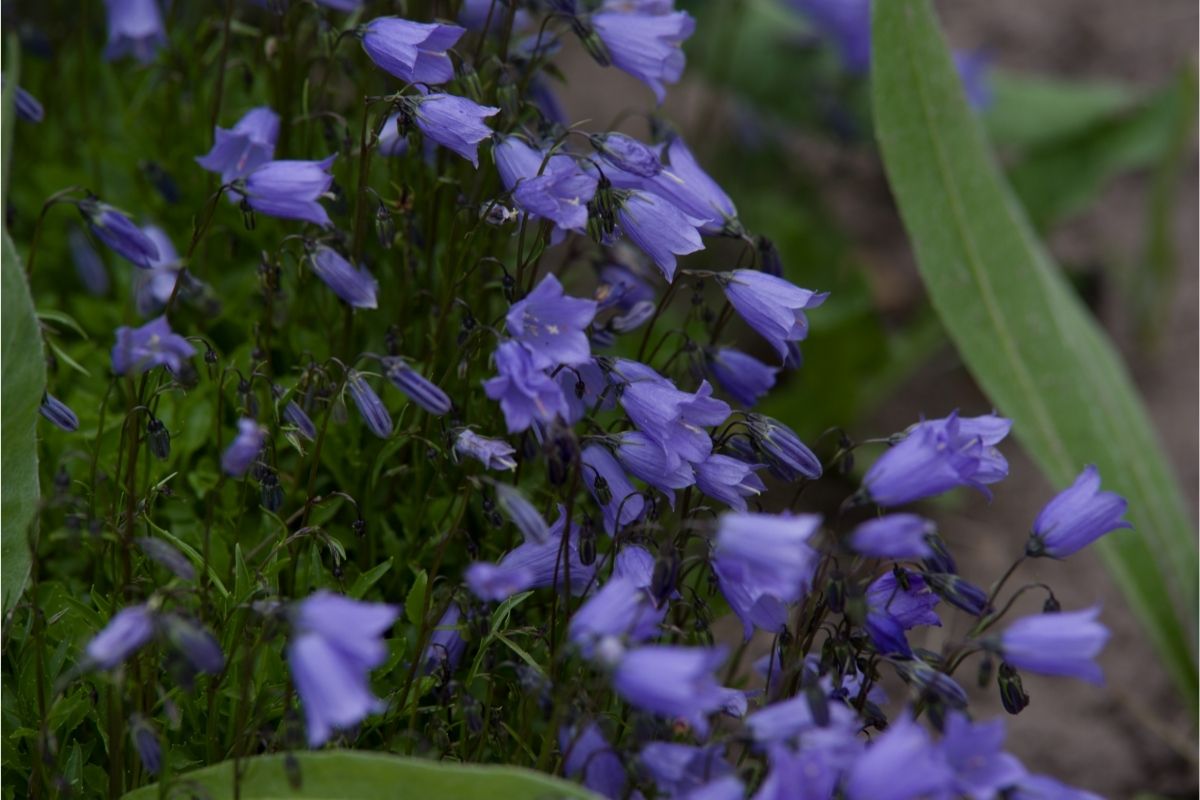
Again, as the name suggests, the Scottish bluebell is primarily found in Scotland but appears across the Northern Hemisphere.
In Scotland, these charming flowers are known as “harebells” or “fairy’s thimbles” thanks to the old folk tales wherein the bluebells symbolize magic.
In terms of appearance, the Scottish bluebell looks fairly similar to the British bluebell.
The key difference, however, is that the bell flowers don’t appear on one side of the stalk – instead, they are exhibited around the stalk, making the flower look bulkier compared to its British counterpart.
Virginia Bluebell (Mertensia Virginica)
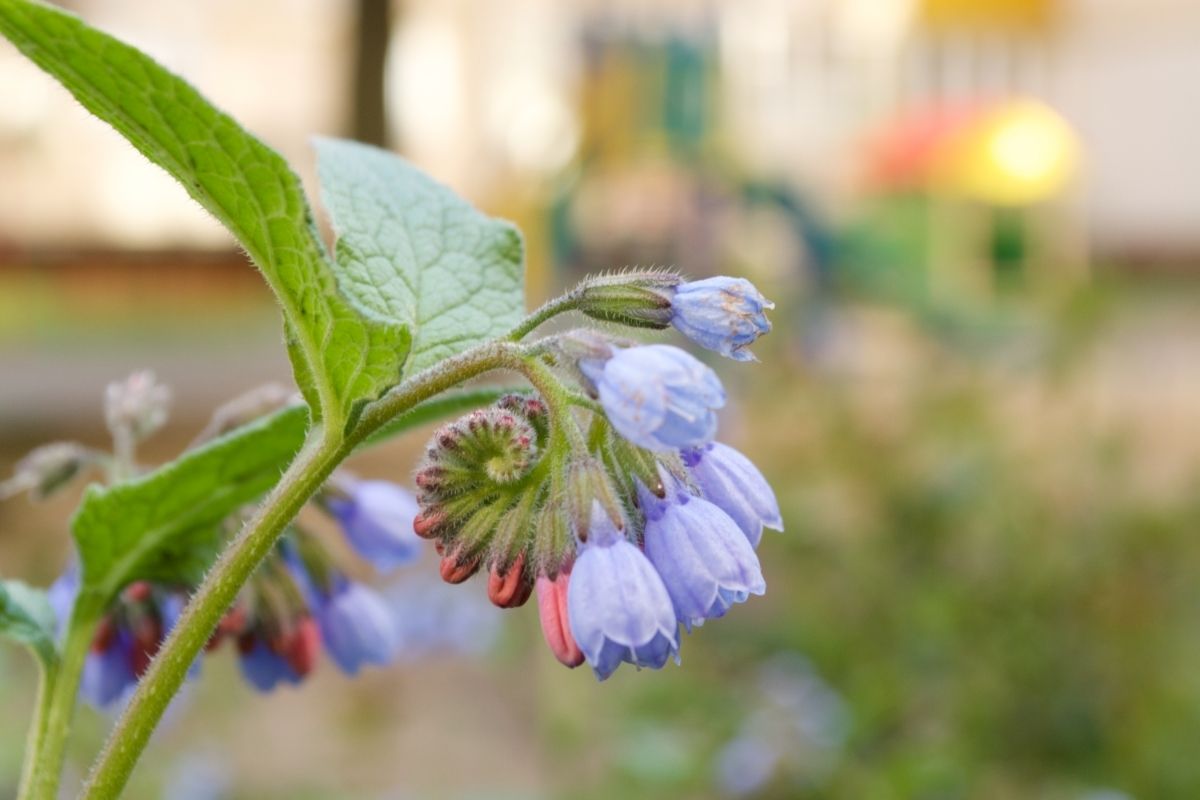
Native to eastern North America, the Virginia bluebell is known for its remarkably short life cycle. Despite its ephemeral cycle,
Virginia bluebells are often planted in gardens as a symbol of the start of spring and new beginnings.
Virginia bluebells consist of sky blue bell-shaped flowers alongside grayish-green rounded leaves. When they first start to develop, the flowers start off with a pink hue before darkening into the blue.
While they are ephemeral, if they grow in the right conditions, they can bloom all the way through summer.
Spanish Bluebell (Hyacinthoides Hispanica)
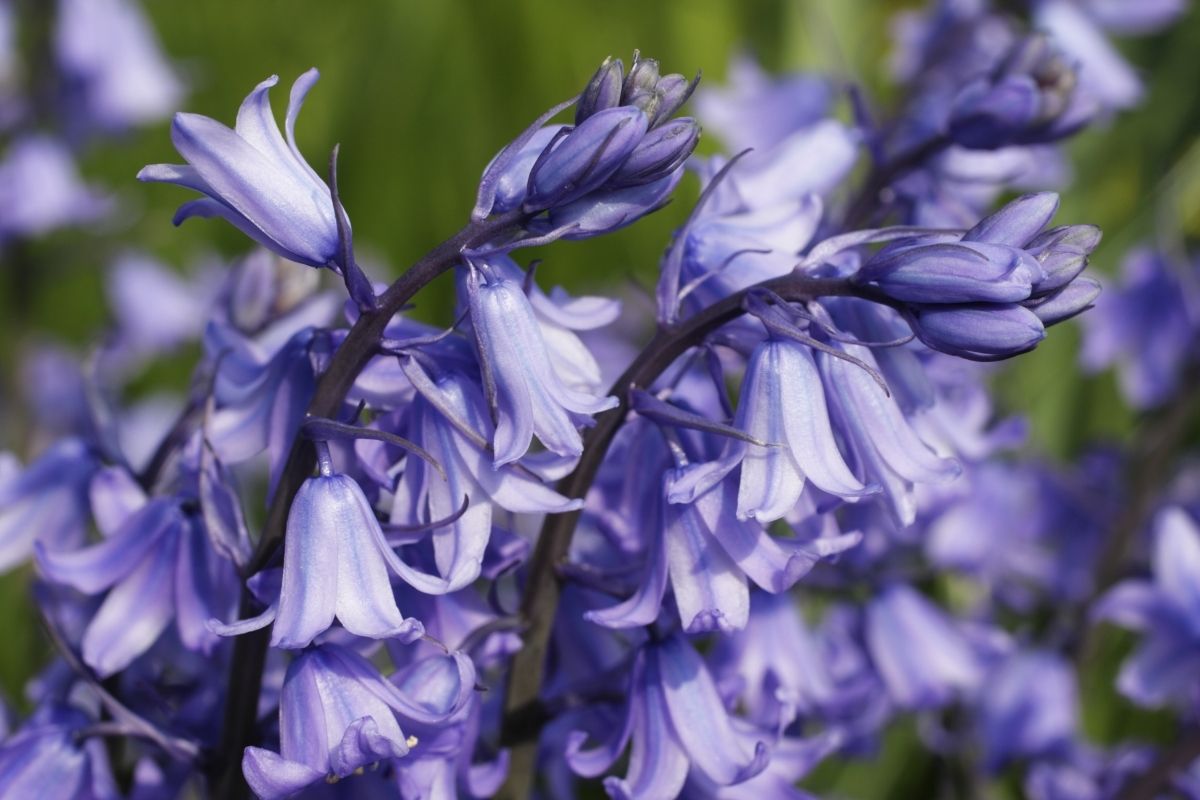
Native to the Iberian Peninsula, the Spanish bluebell is probably most like the British bluebell. Both species grow in woodlands and open areas, however, the Spanish species grows up to 36 inches rather than 18 inches.
The Spanish bluebell flowers also grow around the stalk, which is why the stalk doesn’t bend like the British species.
The reason why Spanish bluebells are such a favored garden flower is that they are a shade-tolerant species.
They enjoy partial sunlight as well as partial shade during the day, which is why they’re so ideal for small or shaded gardens.
Hybrid Bluebell (Hyacinthoides X Massartiana)
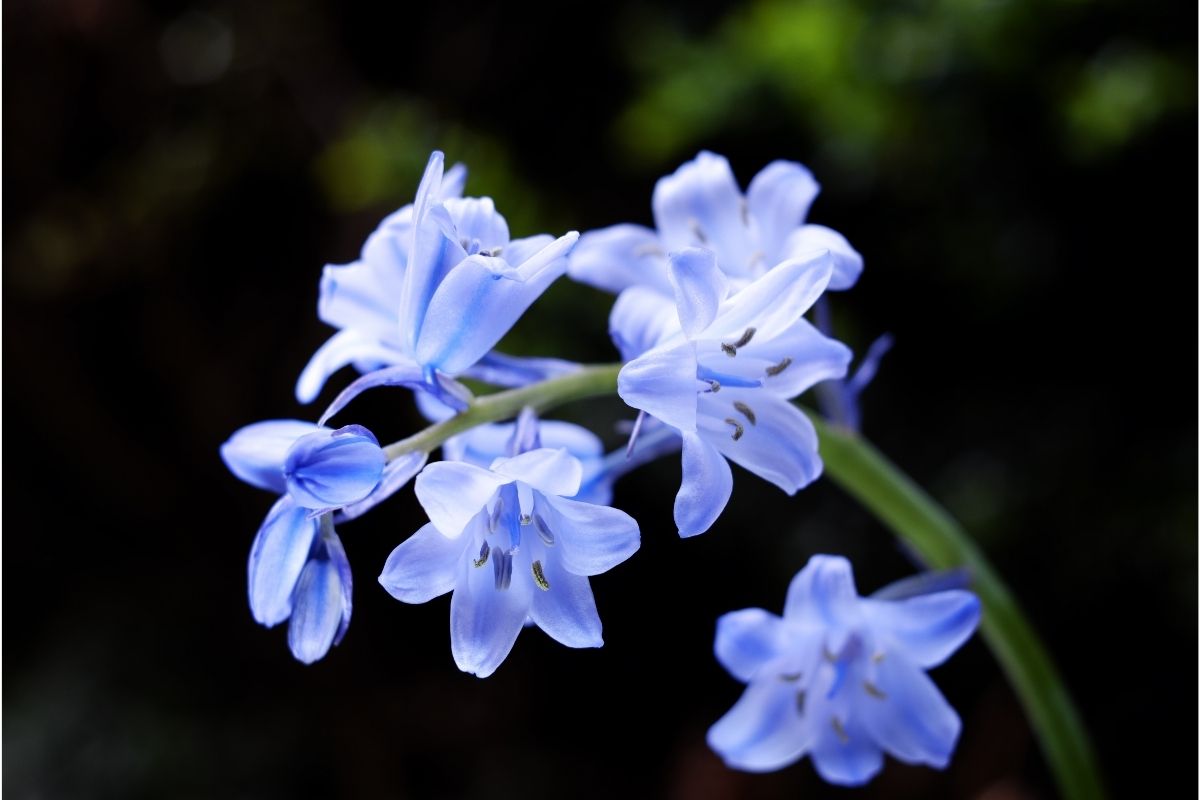
The hybrid bluebell species is a cross between the British and Spanish bluebell, designed to blend the advantages of both species together into one flower.
These flowers look more like the Spanish species with their broad leaves, subtle scent, and flowers growing around the stalk rather than on one side.
The flowers look like the classic bluebell, with the pale blue bell-shaped drooping flowers with hues of lilac. The petals are typically smaller than the Spanish species, which also curve slightly upwards.
Wall Bellflower (Campanula Portenschlagiana)
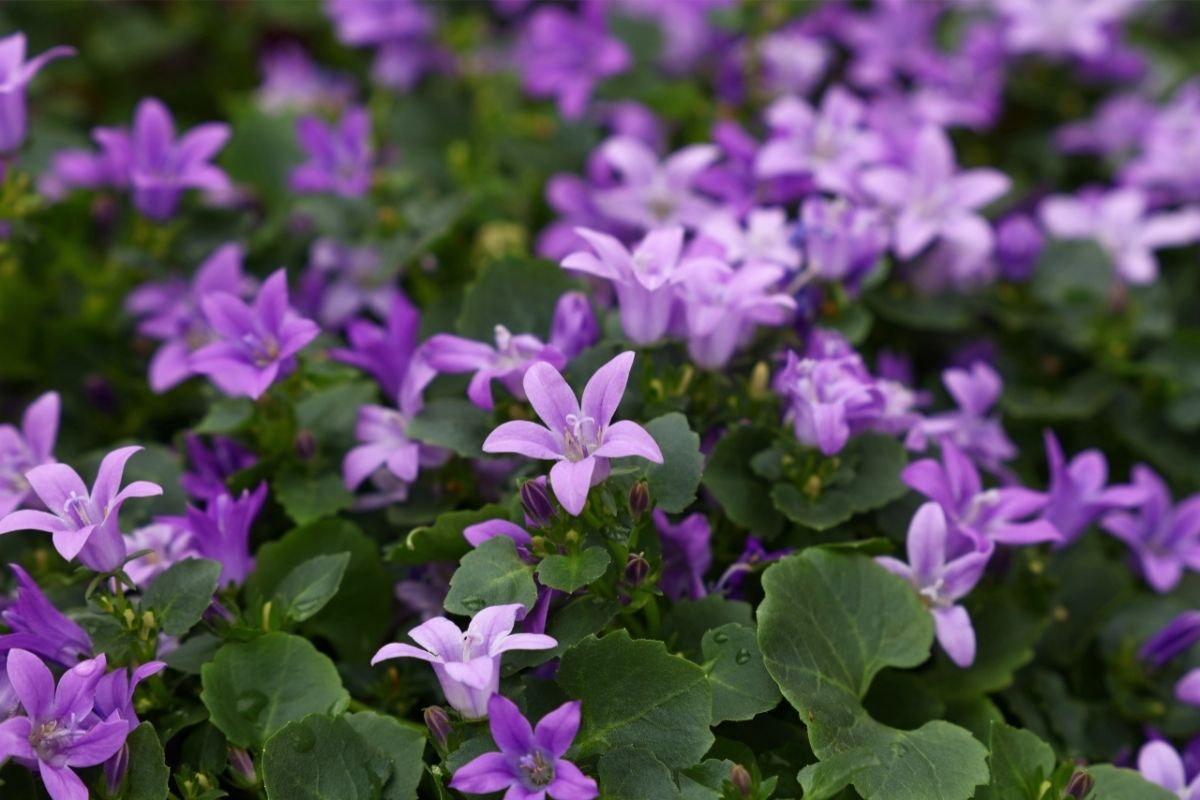
Native to the Croatian Dalmatian Mountains, the wall bellflower is a low-growing and mat-forming perennial known for blooming purple flowers in summer.
Thanks to their natural habitat, these flowers are remarkably hardy and will grow in virtually any soil condition, which is why they are most commonly grown in rock gardens or over garden walls.
Campanula portenschlagiana is also known for its self-pollinating abilities, and how it works to attract other pollinators such as butterflies and bees.
Giant Bellflower (Campanula Latifolia)
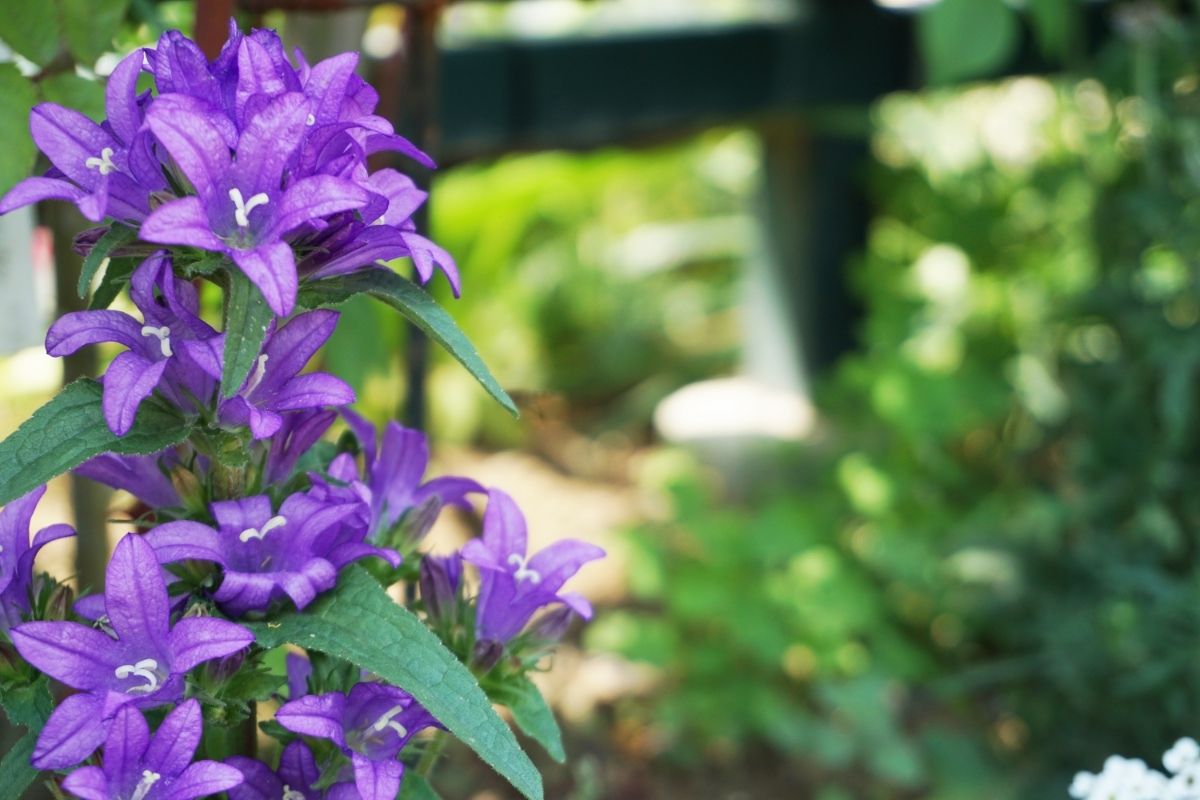
Also known as the wide-leaved bellflower, the giant bellflower is native to Western Asia and Europe.
This species earned its name from the towering heights of up to 47 inches, making it possibly the tallest bluebell species.
Despite its height, this species produces delicate and comparatively small bell-shaped flowers that are typically white or light lavender.
Giant bellflowers prefer partially shaded areas and are most commonly grown along the borders of flower beds.
Milky Bellflower (Campanula Lactiflora)
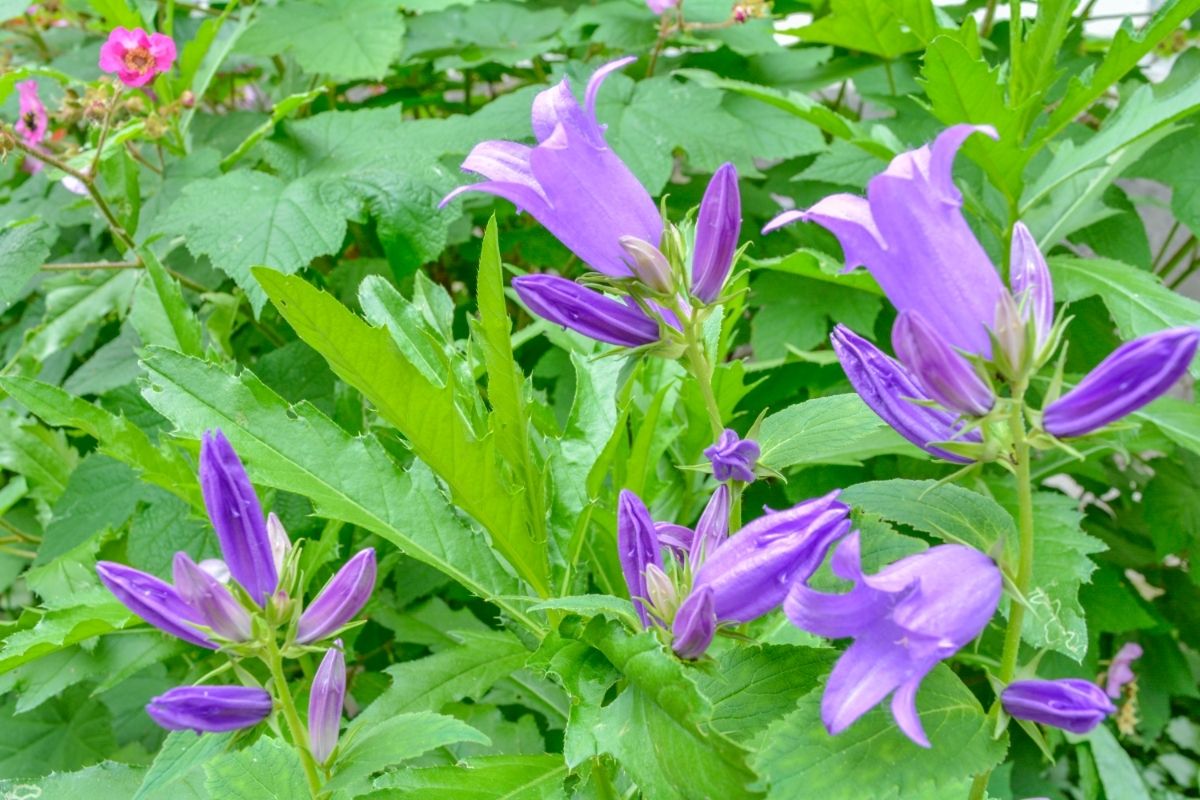
Native to Turkey and the Caucasus, the milky bellflower is a clump-forming campanula species known for its floriferous abilities.
This species blooms in clusters of star-shaped flowers that are generally white or pale blue. While the flowers are technically shaped like stars, they still resemble the classic bell-shaped formation of classic bellflowers.
Milky bellflowers prefer to grow in moist and well-draining soil in either full sun or partial shade. ‘Prichard’s variety’ is a popular variety for those who prefer a violet-blue color.
Clustered Bellflower (Campanula Glomerata)
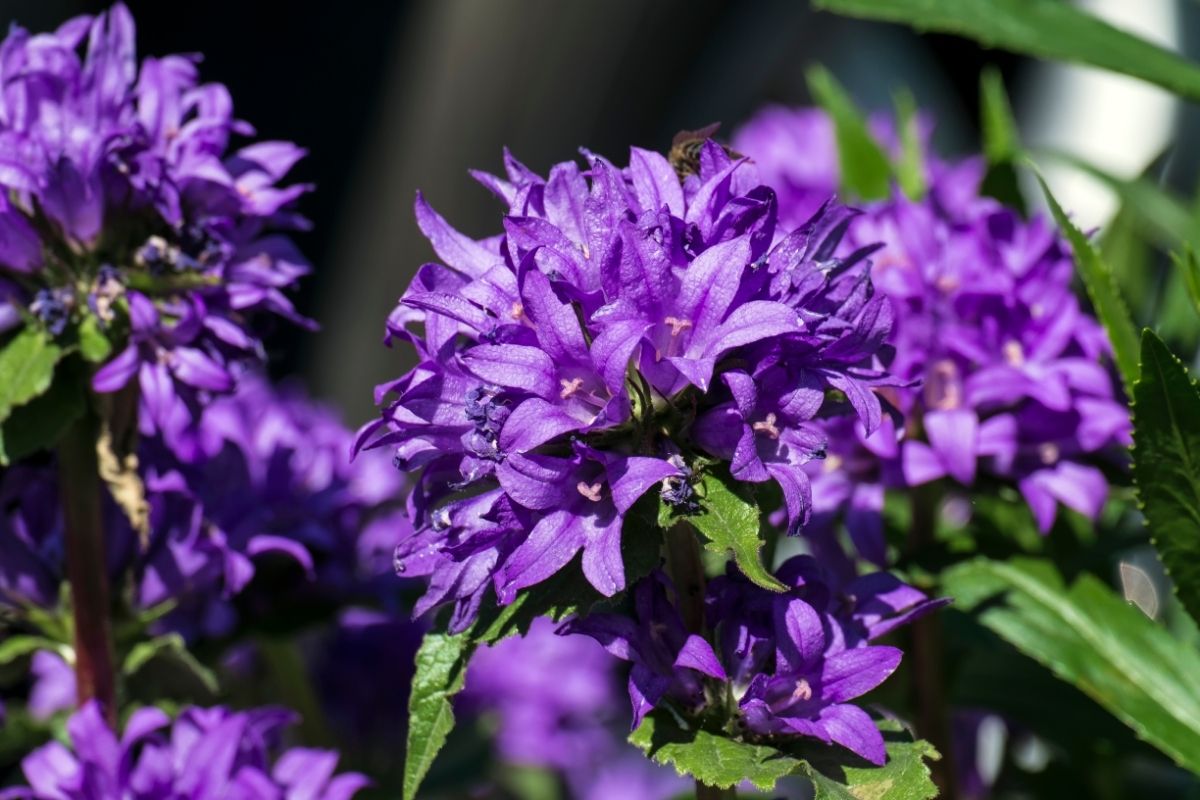
Also known as Dane’s blood, the clustered bellflower is most commonly grown in cottage-themed backyards.
Native across Britain to Japan, this species is known for its erect stalk (growing up to 35”) holding a cluster of 15 to 20 violet-blue flowers.
The cluster formation makes this one of the most colorful bellflower species on our list.
As well as their appearance, the clustered bellflower is favored amongst gardeners for their low-maintenance care requirements.
They can be grown in partial shade or full sun as long as the soil is moist and well-draining.
Peach-Leaved Bellflower (Campanula Persicifolia)
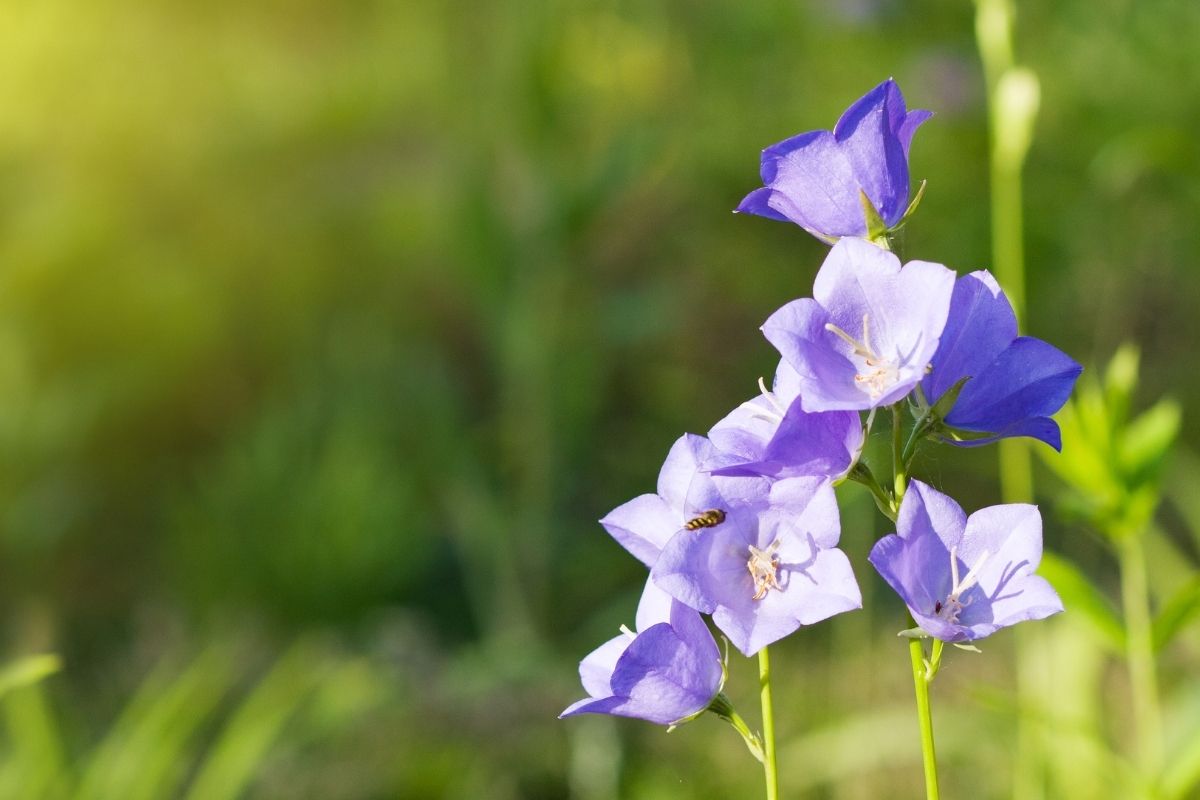
For those looking for a more cup-shaped bellflower, check out the peach-leaved bellflower. Despite its name, this species possesses lilac-blue flowers rather than peachy pink ones.
The petals, unlike traditional bluebells, are slightly more rounded, creating a more old-fashioned cottage garden flower appearance.
The dainty peach-leaved bellflower prefers to grow in sheltered spots with partial shade and partial sun in moist, well-draining soil.
Campanula ‘Sarastro’
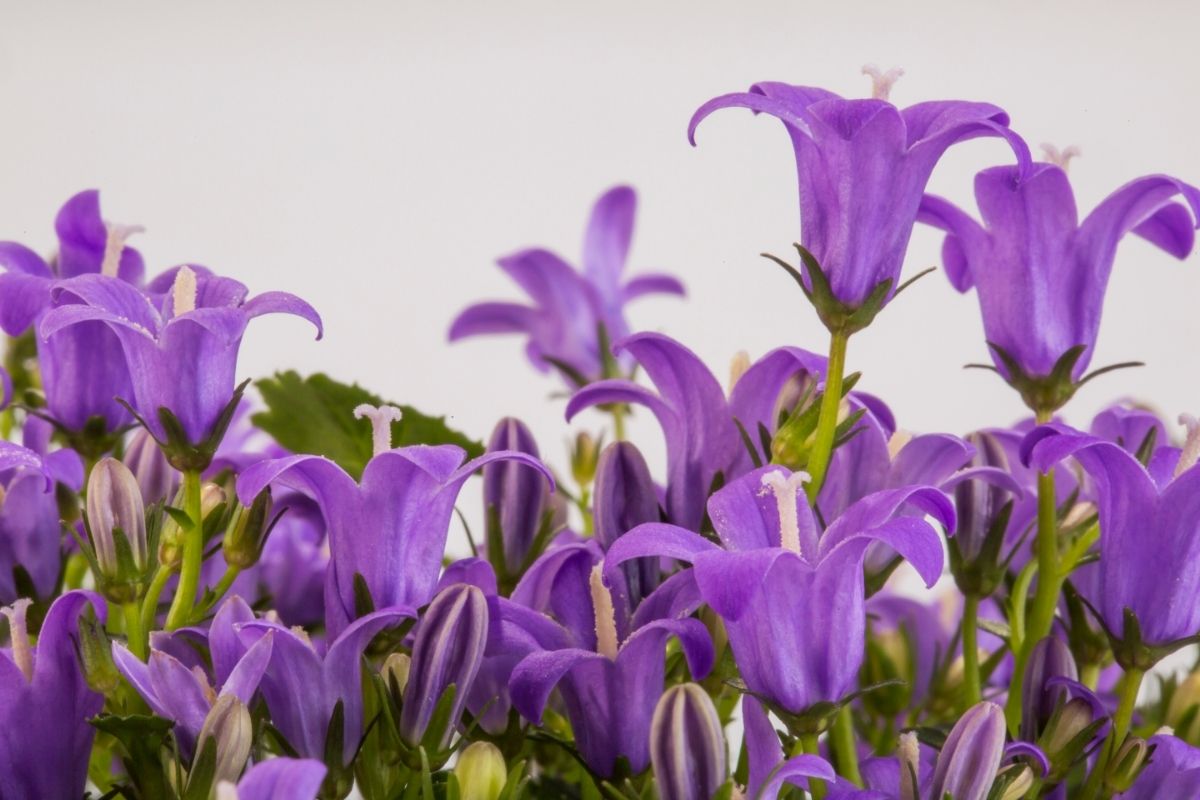
Campanula ‘Sarastro’ is a hybrid bellflower species of campanula trachelium and campanula punctate.
This clump-forming perennial features tall stems with long, drooping dark blue bell-shaped flowers, making for a moody and dramatic appearance. They will typically grow up to 1 meter tall.
Campanula ‘Sarastro’ prefers to grow in well-draining, moist soil in partial shade or direct sunlight. They will only flower in summer but the foliage will remain from spring through fall.
Tussock Bellflower (Campanula Carpatica)
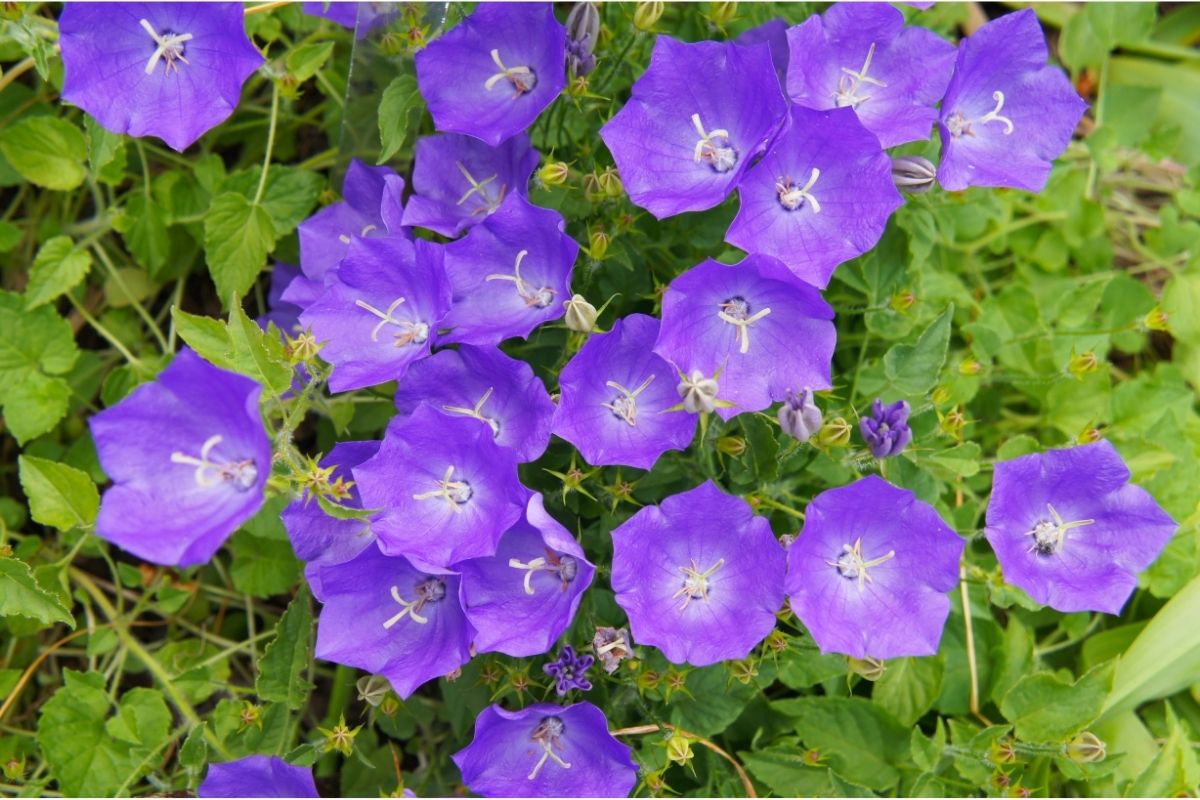
Also known as the Carpathian harebell, the tussock bellflower is arguably the most popular and commonly grown alpine bellflower species. These are low-growing herbaceous plants that bloom large and open bell-shaped blue flowers that are known to grow fairly wide, making them ideal for softening the edges and borders of flower beds.
Tussock bellflowers also come in white, pink, and purple varieties. They are a hardy flower that can grow in most soils, including rock gardens.
Serbian Bellflower (Campanula Poscharskyana)
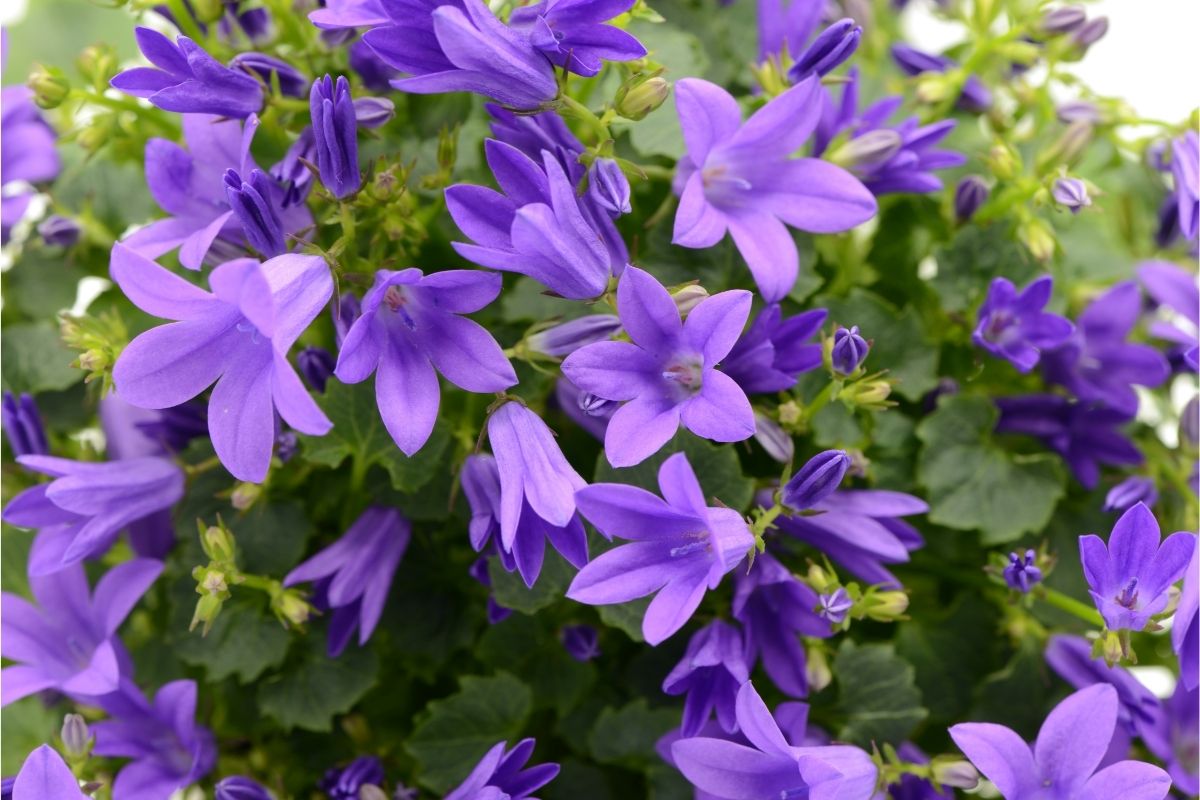
Also known as the trailing bellflower, the Serbian bellflower is a trailing perennial that is ideal for filling in the gaps or brightening up stones, bricks, paving tiles, and walls.
This is because they are native to the rocky Dinaric Alps in Southern and Southeastern Europe. Serbian bellflowers produce star-shaped lavender-blue bellflowers.
Not only are these flowers hardy and ideal for growing amongst rockery, but the flowers remain in bloom from mid-spring to fall, providing a delicate burst of color for many months.
Chimney Bellflower (Campanula Pyramidalis)
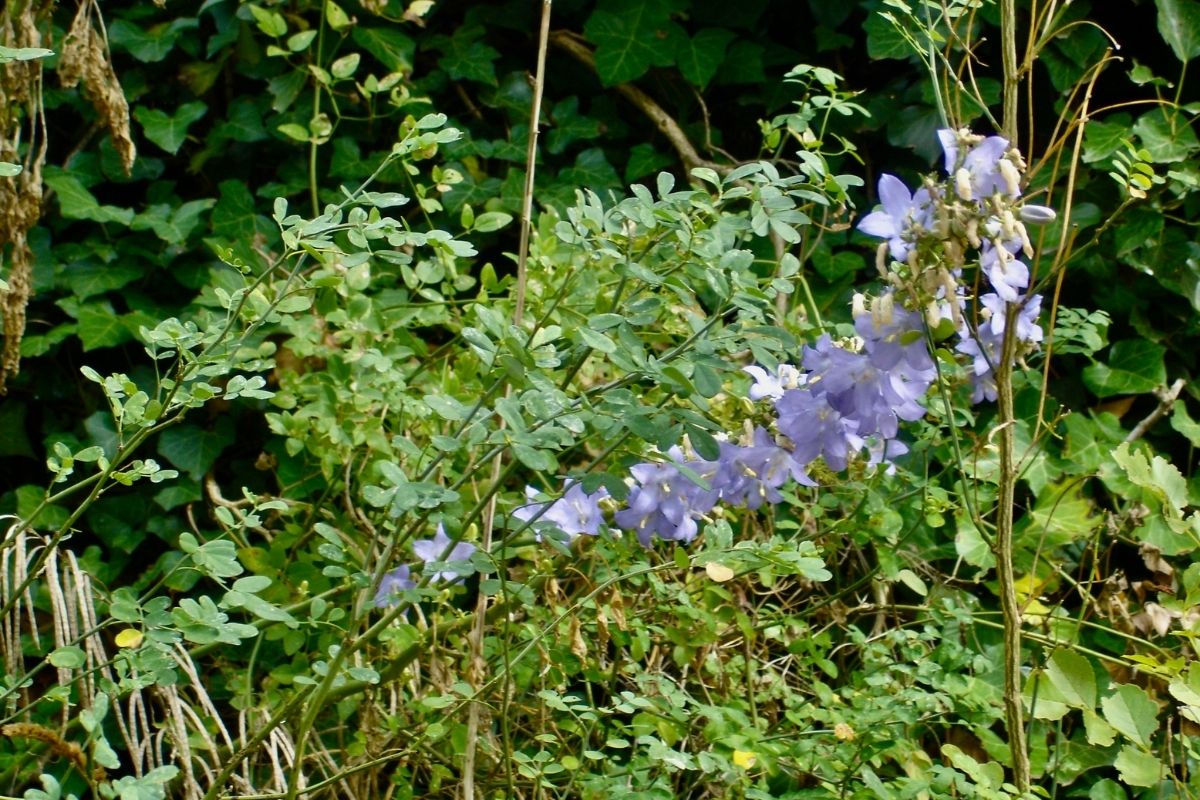
Native to parts of Europe, the chimney bellflower is a short-lived perennial known for its towering erect structure. These flowers grow up to 1.5 meters tall, with delicate drooping bell-shaped blooms circling the stalk.
The flowers are always blue but occasionally with a hint of violet.
These ornamental flowers are very easy to grow and care for thanks to their hardiness to various soil types and wide pH range. They typically prefer partially shaded or partially sunny spaces.
Viking Bellflower (Campanula ‘Viking’)
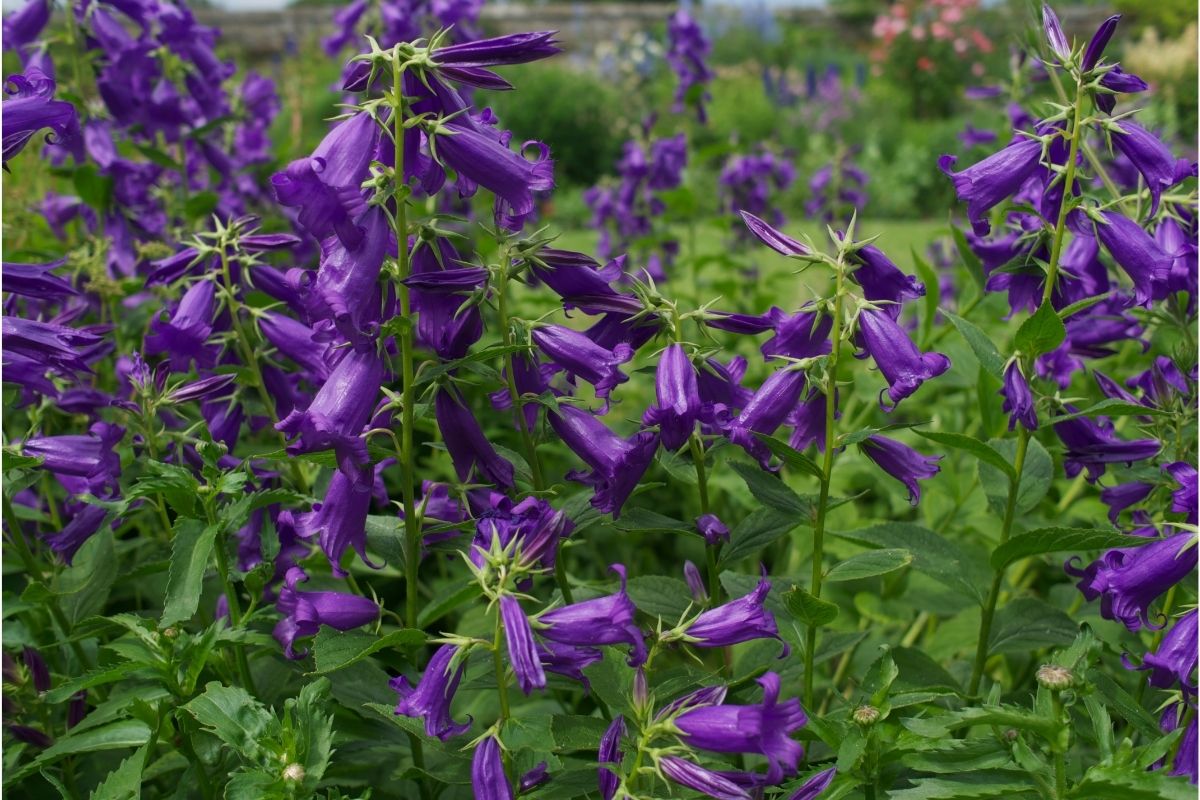
While technically a lavender bellflower, the viking bellflower comes in varying shades of vibrancy, with some appearing more blue than others.
The viking bellflower features upright spikes with bell-shaped flowers that bloom around the stalk. Not only are these naturally pest-free, but these flowers are notorious non-spreaders.
Viking bellflowers are low-maintenance flowers that like to grow in partially shaded areas at the borders of flower beds.
They are most popularly known for attracting pollinators such as hummingbirds.
Conclusion
It’s no wonder why bluebells and blue bellflowers are one of the most popular and beloved flowers in gardens.
With an array of bluebell and bellflower species to choose from, all of which are fairly low-maintenance, gardeners have the ability to transform their once-dormant winter gardens into a meadow of blue bells to mark the start of spring.
Not only do they mark the beginning of spring, but bluebell and blue bellflowers bring an aura of magic to a garden thanks to folklore and interpretations of the mystical flowers.







